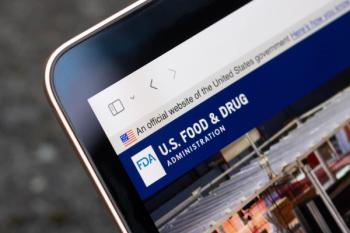
Cytomegalovirus Disease Prevention in High-Risk Liver Transplant Patients: Preemptive Therapy or Prophylaxis?
Organ transplants from seropositive donors carry a high risk of infection from the transplanted organ.
Cytomegalovirus (CMV) is a common pathogen post-transplant. CMV-seronegative patients lack personal immunity. If they receive organ transplants from seropositive donors, the risk for infection from the transplanted organ is high. Antiviral prophylaxis with valganciclovir for at least 3 months is the current gold standard for prevention of CMV infections post liver transplant.
An alternative method is preemptive therapy: starting antivirals once surveillance testing detects early asymptomatic CMV viremia. Now, a study suggests using preemptive therapy may lower the incidence of CMV disease over 12 months compared with antiviral prophylaxis in this high-risk population.
A research team from Pittsburgh randomized 205 CMV seronegative liver transplant patients who received grafts from CMV seropositive donors in a prospective multicenter trial in 6 US transplant centers. The study’s 2 arms compared prophylaxis with preemptive therapy 1:1. The primary outcome measure was the incidence of CMV disease by 12 months post-transplant.
These researchers monitored patients in the preemptive therapy arm with weekly testing for CMV viremia for 100 days. If they detected any level of viremia, they started valganciclovir 900 mg by mouth twice daily until the patient had 2 consecutive negative PCR tests 1 week apart.
The patients in the comparator arm received antiviral prophylaxis with valganciclovir 900 mg daily for 100 days after transplant, with no monitoring.
The incidence of CMV disease at 12 months was significantly lower in patients who received preemptive therapy (9%) than in the antiviral prophylaxis arm (19%).
Preemptive therapy in liver transplant recipients at high-risk for contracting CMV may be a viable approach. Clinicians cannot extrapolate these results to other types of organ transplants due to biologic differences and differences in the intensity of immunosuppressive therapies.
Additionally, preemptive therapy requires weekly monitoring and timely initiation of antiviral therapy. Some transplant programs may be unable to provide these components.
The authors acknowledge that further research is needed to replicate their findings and assess long-term outcomes.
Reference
Singh N, Winston DJ, Razonable RR, et al. Effect of preemptive therapy vs antiviral prophylaxis on cytomegalovirus disease in seronegative liver transplant recipients with seropositive donors: a randomized clinical trial. JAMA. 2020;323(14):1378—1387. doi:10.1001/jama.2020.3138
About the Author
Samantha Troy is a 2021 PharmD Candidate at the University of Connecticut.
Newsletter
Stay informed on drug updates, treatment guidelines, and pharmacy practice trends—subscribe to Pharmacy Times for weekly clinical insights.




















































































































































































































